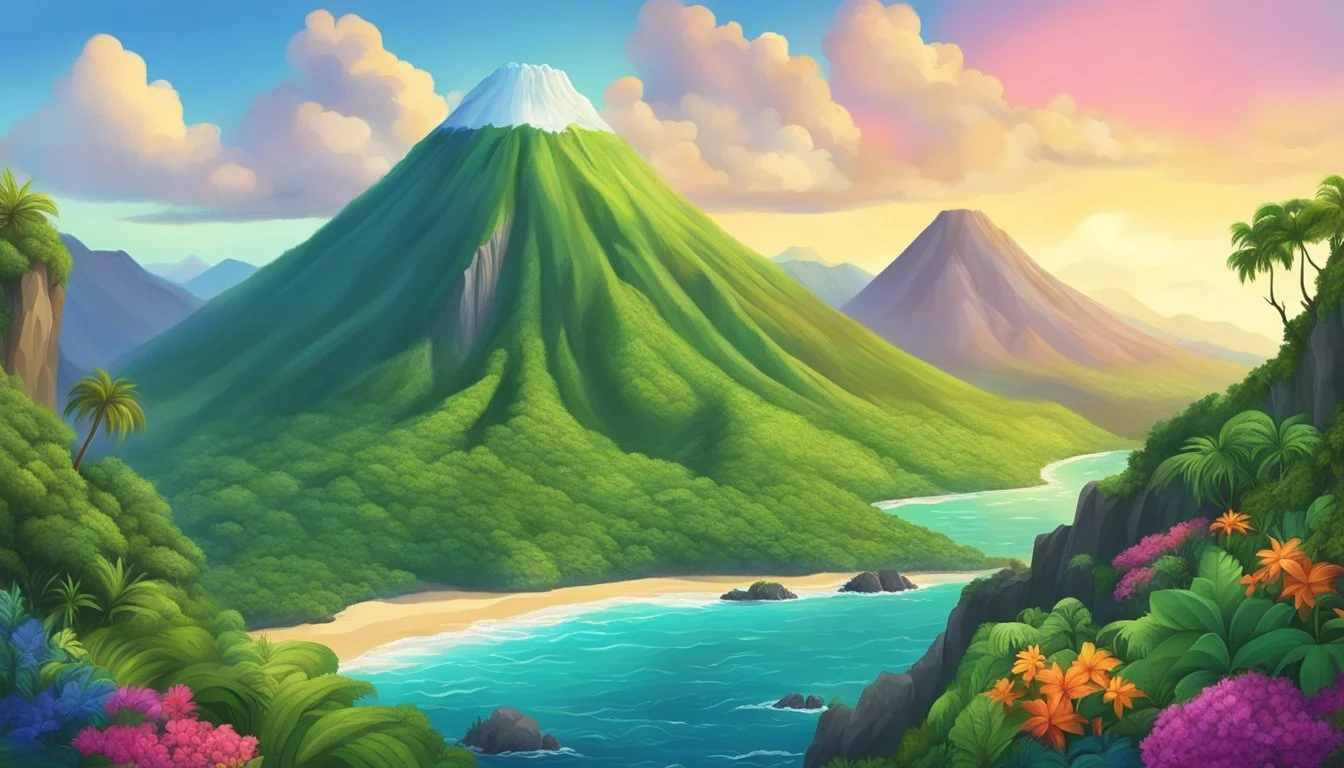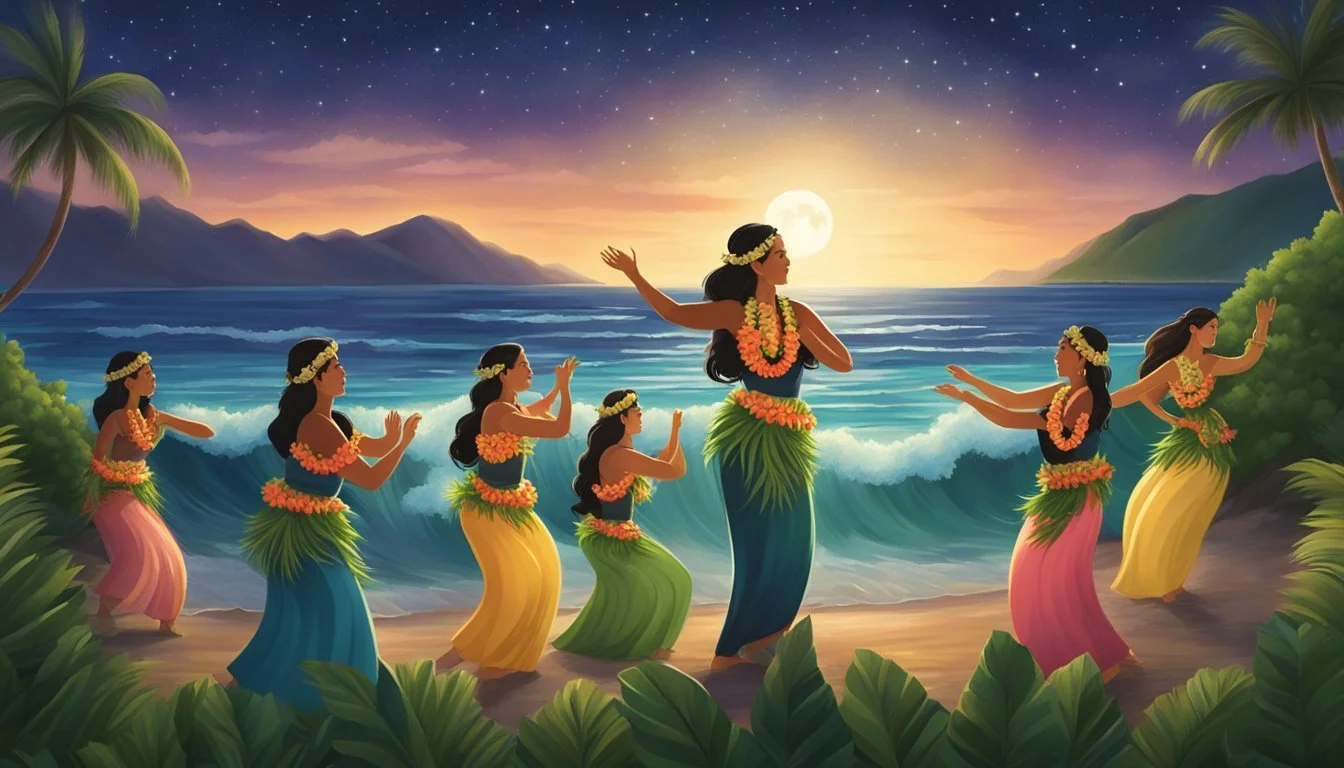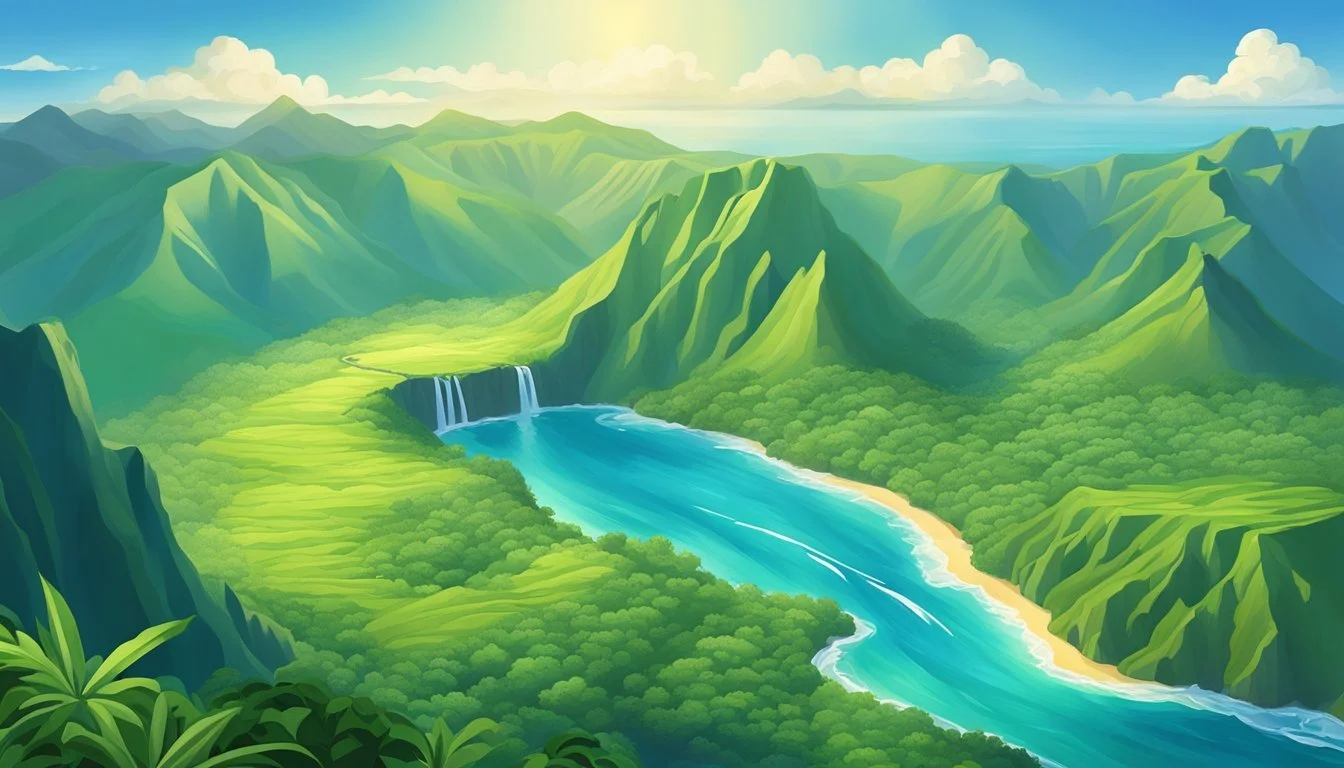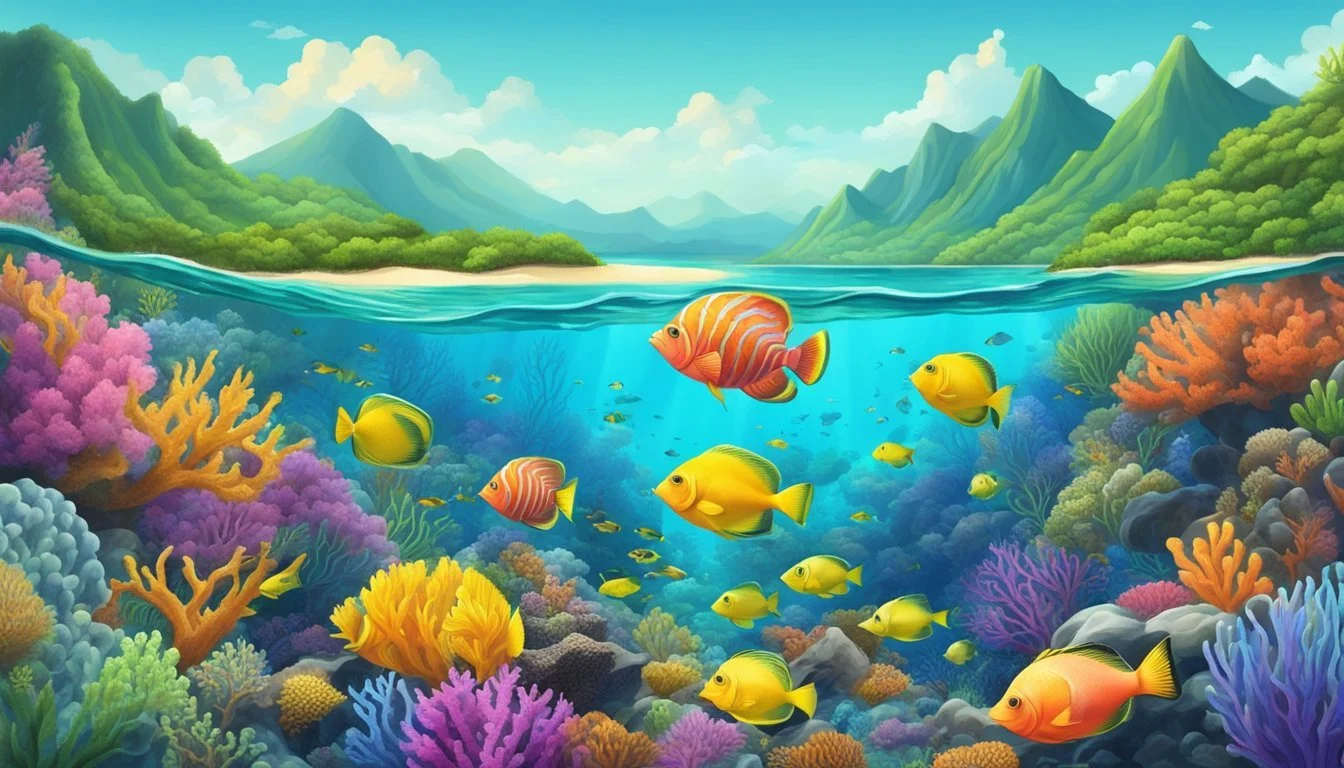5 Eye-Opening Documentaries on Hawaii
Unveiling Paradise's Hidden Depths
Hawaii's captivating landscapes and rich cultural heritage have long fascinated people around the world. From its lush tropical forests to its volcanic peaks and pristine beaches, the Hawaiian islands offer a unique blend of natural beauty and human history.
Documentaries provide an excellent way to explore and understand the many facets of Hawaii. These films offer viewers an in-depth look at the islands' ecosystems, indigenous traditions, and modern challenges, presenting a more nuanced perspective than typical tourist experiences. By showcasing diverse aspects of Hawaiian life and environment, these documentaries help foster a deeper appreciation for this remarkable Pacific archipelago.
1) The Land of Eb
"The Land of Eb" offers a poignant glimpse into the lives of Marshallese immigrants in Hawaii. This documentary explores the challenges faced by those living on the fringes of society in the Aloha State.
The film focuses on a Marshallese family struggling to make ends meet on the Big Island of Hawaii. It portrays their daily lives, cultural adjustments, and the economic hardships they encounter.
Through intimate storytelling, "The Land of Eb" sheds light on the often-overlooked Marshallese community in Hawaii. The documentary captures the resilience and determination of these immigrants as they navigate their new home.
Viewers gain insight into the complex social dynamics and cultural preservation efforts within this tight-knit community. The film also touches on broader themes of displacement, identity, and the search for belonging.
"The Land of Eb" presents a raw and authentic portrayal of immigrant experiences in Hawaii. It encourages viewers to reflect on the diverse communities that make up the islands' social fabric.
2) Ola: Health is Everything
"Ola: Health is Everything" is a powerful documentary that explores the concept of health in Hawaii. Directed by Matthew Nagato, the film challenges viewers to reconsider their understanding of well-being.
The documentary delves into Hawaii's unique social values and their impact on community health. It examines how various social factors contribute to creating thriving, sustainable communities.
"Ola," which means "life" or "well-being" in Hawaiian, showcases the state's healthcare challenges and successes. The film highlights innovative approaches to improving public health outcomes.
Premiering to acclaim in Hawaii, "Ola" has since gained wider recognition. It features insights from healthcare professionals, community leaders, and local residents.
The documentary emphasizes the importance of community-driven solutions in addressing health issues. It presents a holistic view of health that goes beyond individual medical care.
"Ola: Health is Everything" serves as an eye-opening exploration of Hawaii's health landscape. It offers valuable lessons for viewers interested in public health and community well-being.
3) Hana Hou: Living Hawaiian Culture
"Hana Hou: Living Hawaiian Culture" is a documentary that explores the vibrant traditions of Hawaii's indigenous people. The film showcases the efforts of native Hawaiians to preserve their ancestral practices and pass them on to future generations.
Viewers are introduced to various aspects of Hawaiian culture, including traditional dance, music, and crafts. The documentary highlights the significance of hula, not just as a performance art, but as a means of storytelling and cultural expression.
The film also delves into the importance of the Hawaiian language revival movement. It features interviews with language educators and students who are working to keep the native tongue alive and relevant in modern society.
"Hana Hou" provides an in-depth look at traditional Hawaiian agriculture and fishing methods. It demonstrates how these practices are being adapted to address contemporary environmental challenges while maintaining cultural integrity.
The documentary sheds light on the role of Hawaiian spirituality in daily life. It explores sacred sites and rituals, offering viewers a respectful glimpse into the spiritual beliefs that underpin Hawaiian culture.
Through personal stories and community initiatives, "Hana Hou" paints a picture of a living, evolving culture. It emphasizes the resilience of Hawaiian traditions in the face of modernization and cultural assimilation.
4) Kumu Hina
Kumu Hina is a powerful documentary that explores the life of Hinaleimoana Wong-Kalu, a transgender native Hawaiian teacher and cultural icon. The film sheds light on Hawaii's traditional acceptance of māhū - individuals who embody both male and female spirits.
Wong-Kalu's journey from a timid high school boy to a respected married woman and community leader is beautifully captured. As a kumu (teacher), she works to preserve and pass on Hawaiian traditions to younger generations.
The documentary highlights the important role māhū have played in Hawaiian society as caretakers, healers, and keepers of ancient customs. It offers a unique perspective on gender identity within the context of native Hawaiian culture.
Kumu Hina's story is one of personal triumph and cultural preservation. The film explores how she uses traditional Hawaiian values to empower her students and community.
By sharing Wong-Kalu's experiences, the documentary provides insight into Hawaii's long-standing embrace of gender fluidity. It challenges viewers to reconsider conventional notions of gender and identity.
5) Family Ingredients: Hawaii
Family Ingredients is an Emmy Award-winning documentary series that explores Hawaii's diverse culinary heritage. The show traces the origins of beloved local dishes back to their roots across the Pacific and beyond.
Each episode follows host Ed Kenney and a guest as they journey from Hawaii to another location. They investigate the connections between family recipes and cultural identities.
The series highlights the multicultural influences that have shaped Hawaiian cuisine. It features dishes with origins in places like Japan, Puerto Rico, and other Pacific Islands.
Family Ingredients goes beyond food to examine themes of genealogy, migration, and cultural preservation. The show emphasizes the importance of locally sourced ingredients and sustainable practices.
Viewers get an intimate look at how food connects generations and cultures in Hawaii. The series showcases the islands' unique culinary landscape and the stories behind cherished family recipes.
Cultural Insights
Hawaii's rich cultural heritage shines through in documentaries exploring traditional practices and language. These films offer viewers a deeper understanding of Hawaiian customs and communication.
Traditional Hawaiian Practices
"Nā Kamalei: The Men of Hula" showcases the art of hula through the lens of Robert Cazimero's all-male hula school. The film highlights the dedication required to master this ancient dance form.
Hula plays a vital role in preserving Hawaiian history and storytelling. Dancers use precise movements and gestures to convey narratives passed down through generations.
Another documentary, "Hōkūleʻa: Finding the Language of the Navigator," explores the revival of traditional Polynesian wayfinding. It details how Hawaiians relearned ocean navigation skills from Micronesian master navigator Mau Piailug.
This film emphasizes the importance of cultural knowledge transmission and the connection between Hawaiians and their seafaring ancestors.
Language and Dialogue
Documentaries often feature Hawaiian language, offering viewers exposure to this beautiful and endangered tongue. Filmmakers may include subtitles or translations to aid comprehension.
Some films incorporate interviews with native speakers, preserving authentic accents and dialects. This approach helps audiences appreciate the nuances of Hawaiian pronunciation and intonation.
Documentaries might also explore efforts to revitalize the Hawaiian language through immersion schools and community programs. These initiatives aim to increase the number of fluent speakers and ensure the language's survival for future generations.
Environmental Highlights
Hawaii's unique geography and isolation have created remarkable ecosystems. The islands face environmental challenges but are also home to innovative conservation efforts.
Unique Ecosystems
Hawaii boasts diverse ecosystems found nowhere else on Earth. The islands harbor over 25,000 species, with many endemic to the region. Tropical rainforests cover parts of the islands, supporting rare plants and animals.
Marine environments surrounding Hawaii teem with life. Coral reefs host colorful fish, sea turtles, and other aquatic species. The islands' volcanic origins have shaped distinctive landscapes, from lava fields to cloud forests.
Climate variations across short distances create numerous microclimates. This allows for a wide range of habitats within small areas. Hawaii's ecosystems are delicate and vulnerable to outside influences.
Conservation Efforts
Hawaii leads in environmental protection initiatives. The state aims to use 100% renewable energy by 2045. Solar and wind power projects are expanding rapidly across the islands.
Conservationists work to preserve native species and habitats. Programs focus on removing invasive plants and animals. Efforts to save endangered birds like the nene goose have shown success.
Marine protected areas safeguard ocean ecosystems. These zones limit fishing and other activities to protect coral reefs and fish populations. Community-based conservation projects engage locals in protecting their natural heritage.
Sustainable tourism practices are gaining traction. Hotels and tour operators increasingly adopt eco-friendly measures. These include reducing plastic waste and promoting responsible wildlife viewing.





